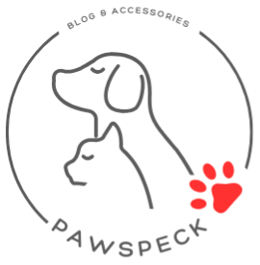Train your dog to push a button or ring a bell to go outside
Teaching your dog to push a button or ring a bell is a fun and practical way to improve communication between you and your furry friend.
DOG TRAINING
1/5/20253 min read
Teaching your dog to push a button or ring a bell is not just a fun party trick—it’s a practical way to improve communication with your furry friend. Whether your dog needs to signal they want to go outside, ask for attention, or even request a treat, this simple skill can make daily life easier for both of you. In her video tutorial on Youtube, Kate Naito walks you through this process step by step, drawing inspiration from her book Play Your Way to Good Manners. This guide outlines what you will learn in the video, so you and your dog can get started today.
The first step to teaching your dog this skill is to introduce a paw target. As demonstrated in the video, this begins with something as simple as a sticky note. By placing a treat behind the sticky note, your dog is encouraged to paw at it. Each time they touch the note, they are rewarded with the treat, creating a positive association with the action. Over time, the treat is removed from behind the sticky note, but the reward remains. This method ensures that your dog learns the behavior while staying motivated to continue. Mastering the paw target is the foundation for teaching them how to push a button or ring a bell.
Once your dog is consistently pawing at the sticky note, the next step is to move it to different surfaces. This helps your dog understand that the target is not fixed to one spot. For example, the sticky note can be placed on your hand or other low objects, encouraging your dog to generalize the paw targeting behavior. The video emphasizes the importance of rewarding your dog generously during this stage, particularly when they perform well. By doing so, you build their confidence and reinforce the idea that hitting the target is always a rewarding experience.
The video then transitions to the exciting part—introducing the button or bell. At this stage, the sticky note is placed on the button or bell to help your dog associate the two. Over time, the sticky note is gradually faded out by making it smaller and smaller until only the button or bell remains. If you wish to add a verbal cue, such as “hit it,” the video explains how to incorporate this into your training. By combining the physical target with a verbal command, your dog learns to associate the action with both the cue and the device.
Positive reinforcement is key throughout the training process. As shown in the video, using treats to reward your dog every time they successfully hit the button or bell keeps them motivated and excited to learn. Over time, the video suggests phasing out the treats so that the action itself—such as going outside or getting your attention—becomes the primary reward. This gradual transition ensures that the behavior becomes a consistent and reliable part of your dog’s routine.
By the end of the video, you’ll see how these steps come together in a seamless process. Kate Naito’s dog, Margaret, serves as a perfect example of how effective this training method can be. Margaret confidently uses her button to signal when she needs to go outside, showing how consistency and positive reinforcement can yield impressive results.
Teaching your dog to push a button or ring a bell is a simple yet highly rewarding training activity. It strengthens the bond between you and your dog while also providing them with a way to communicate their needs. If you’re eager to explore more training tips and techniques, Kate Naito’s book Play Your Way to Good Manners is a fantastic resource. By using tricks, games, and sports, her methods make training an enjoyable experience for both you and your dog.
So why wait? Start teaching your dog this practical and fun skill today, and watch as they surprise you with just how much they can learn.
This blog contains affiliate links, including links to products on Amazon. As an Amazon Associate, I earn from qualifying purchases. This means that if you click on one of these links and make a purchase, I may earn a small commission at no additional cost to you. These commissions help support the work I do to bring you valuable content and recommendations. Thank you for supporting this blog!

PawSpeck
Your go-to source for pet lovers' advice.
Contact:
© 2024. All rights reserved.


